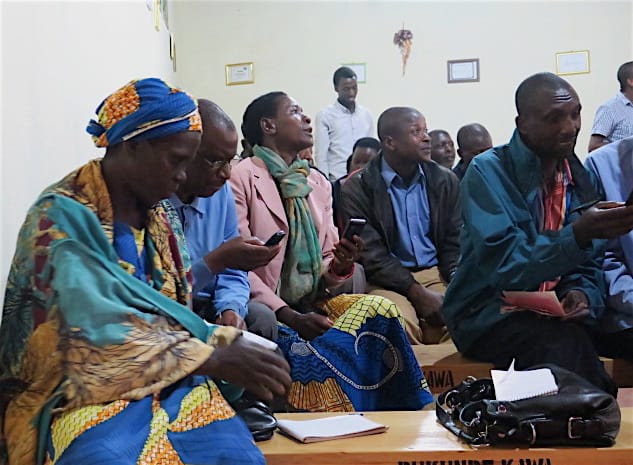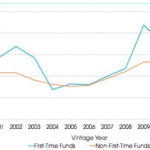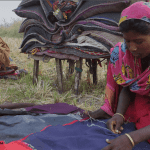Why a Few More Women Coders Isn’t Enough to Close the Digital Gender Divide
“Girls in ICT,” “women in tech,” “women in STEM,” “girls that code.” Attend any conference on business, social enterprise or technology in emerging markets and its likely you can take in a panel on one of these topics. While high-level discussions and a sprouting of initiatives to encourage girls to enter the technology field are steps in the right direction, there is still a long way to go in closing the digital gender divide.
The unfortunate reality is that the digital gender gap is in fact growing wider. According to a 2016 report from ITU, the United Nation’s agency for information and communication technologies:
“The global Internet user gender gap grew from 11 percent in 2013 to 12 percent in 2016. The gap remains large in the world’s Least Developed Countries (LDCs) — at 31 percent. In 2016, the regional gender gap is largest in Africa (23 percent).”
While disappointing, this is not completely surprising. The majority of these initiatives focus on women in urban areas while the digital divide is greatest in rural areas where communities and women in particular have the least access to digital tools, and often lack the education and resources to access and utilize them. The reality is that despite much effort there is a significant risk of leaving the most marginalized and unconnected women far behind.
Despite the Sustainable Development Goal of affordable, universal internet access by 2020, current patterns suggest we will miss this target by more than 20 years (A4AI, 2017 Affordability Report). Because women in rural areas are most likely to be left behind, we need to explore new innovative approaches and technologies for driving digital inclusion – despite the constraint of existing infrastructure or broadband access.
While government and the public sector have an important part to play, companies can also play a key role in bridging this digital gender divide. The below case study provides an example of how N-Frnds, a software company, is working to address these constraints and bring both digital and financial inclusion to rural women, regardless of their digital device. (Note: The author is vice president of business development at N-Frnds.)
N-Frnds specializes in bringing cloud-based software solutions to enterprises in emerging markets, enabling them to serve their customers and suppliers throughout their value chains. We work with partners ranging from agricultural or fast moving consumer goods companies to financial institutions or governments to reach their end-users and bring them into the digital world. Through our work with these partners we have gained important insights that allow us to better serve our more than 15 million end-users in Sub-Saharan Africa and Southeast Asia. Below are some of these insights and how we are using them to reach rural women and narrow the digital gender divide.
Relevance and Affordability
While it is important to work to bring broadband access to women, there is a need for solutions that are accessible, affordable and relevant today. There is no time to wait; if women are not brought into the digital ecosystem today they will simply lag further and further behind. At N-Frnds we are enabling these women to access a broad range of relevant digital resources ranging from agricultural information to mobile savings accounts, micro-loans, Wikipedia or financial and health tips without the need for mobile data or even a smart device.
Not only does this allow these women access to services and knowledge, but connecting them to the digital world also enables governments, companies and organizations to reach often marginalized users and collect data and information that allows them to better serve these users, whether by developing more gender-appropriate policies, offering access to credit or collecting gender specific information.
By enabling both the sharing (with user permission) and collection of data from rural women we are providing a platform for them to join the digital world today. All data belongs to the users or partner organizations and is not shared without their permission.

Above: N-Frnds demos mobile technology with farmers in Rwanda.
Gradual Introduction of technology
Numerous studies show that women entrepreneurs are less likely that their male counterparts to utilize digital accounting and financial management tools or practices. The transition to bring such women access to these tools needs to be gradual and take into consideration the constraints and environment. A user-centered approach is crucial to understanding what initial steps can be taken to catalyze this transition. For example, through discussions with micro-merchants we learned that loyalty, a concept well developed in mature markets, is well received among emerging market micro-entrepreneurs familiar with the concept of offering an informal discount or a free product to their regular customers. We therefore are offering a mobile-based loyalty program tailored to micro-merchants. This is designed as a gateway for familiarizing these merchants with using their phones as a business tool. It is thereby preparing for the gradual introduction of more and more digital tools, ranging from point-of-sale to basic accounting services that they can access on their existing mobile phones with no need for a smartphone or data package. In this way we are empowering women entrepreneurs with relevant digital tools developed to serve their unique business needs.
Empowering Young Rural Women as agents for Driving Technology Adoption
In 2016 N-Frnds launched a social initiative for closing the digital divide, a program for training local youth in entrepreneurship and driving the technology adoption of the next 4 billion. This year, building upon our experience and insights, we have adapted the program to focus specifically on young women entrepreneurs in rural areas – not as beneficiaries but rather as agents of change who are driving technology adoption in their communities.
We’re bringing this program to this year’s Young Women Entrepreneurs Fellowship (YWEF), which will launch in June in Gisenyi, Rwanda in the newly established rural-based kLab tech hub. We will provide training to 30 young women in communication, leadership, critical thinking, marketing and business. These young women, none of whom are required to have any background in IT, will receive practical experience in driving technology adoption with rural customers, agribusinesses and farmers. They will also provide valuable feedback on content and features that will help us ensure the platform provides appropriate content and services relevant to rural women.
The program is supported by USAID, and will complement a parallel program being run by N-Frnds in partnership with the Rwanda Ministry of Agriculture and Animal Resources, where we are training farmers throughout the country to use our platform as a source of agri-information and extension services. The young women taking part in the YWEF program will play an important role in driving the technological adoption of these farmers with the support and guidance of the N-Frnds team and local mentors.
We at N-Frnds are working to gradually introduce digital services tailored to the needs and constraints of our female customers. However, we also see women as key partners and agents of change. The YWEF is not only a social program that allows us to provide training and opportunities to young women, it’s also part of our long-term vision where women play a key role in our business – as employees, partners and change agents. Driving technological adoption for all will help narrow and eventually close both the digital and gender divide.
Caylee Talpert is vice president for business development at N-Frnds.
Photo credits: N-Frnds, IICD, via Flickr, and UNMISS via Flickr.
- Categories
- Technology



